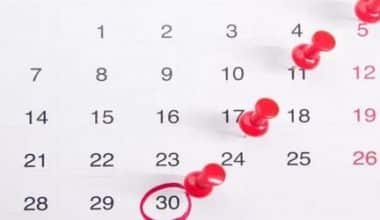Press releases are the bedrock of modern business communication, serving as powerful conduits for conveying immportant news and updates. In this guide, we’ll explore the significance of press releases in today’s marketing landscape and provide insights into crafting impactful communications. Let’s get started.
What Is A Press Release?

A press release, also known as a news release, is an official statement sent by a company to the press or other concerned parties, usually to announce news, events, or recent updates. This press release can serve as an official statement, providing journalists and stakeholders with relevant information about your company’s activities, achievements, or developments.
The concept of press release dates back to the early 20th century, when Ivy Lee, a pioneering public relations expert, devised a means to pass information to the media in a standardized format. Although it was initially used to inform journalists about corporate developments, press releases became relevant during World War II as a tool for government agencies to communicate with the public. Since then, press releases have evolved to become a major tool in modern public relations and marketing strategies.
What Is A Press Release Used For?
The primary purpose of a press release is to provide information, create an official statement, or make an official announcement directed for public release. They can be used to announce anything from new product launches to corporate milestones, financial results, executive appointments, and industry awards, and charitable initiatives. Additionally, press releases can help your company manage crises, address rumors, and shape public opinion during challenging times.
The Role Of Press Releases in Modern Marketing Strategies
Currently, press releases play a major role in integrated marketing communications strategies. They serve as valuable content assets that can be distributed through various channels including online news wires, social media platforms, company websites, and email newsletters. Modern press releases can capture audience attention and enhance engagement by leveraging multimedia elements such as images, videos, and infographics. Additionally, press releases contribute to search engine optimization (SEO) efforts by generating backlinks and improving online visibility. You know what that can do for your site, right?
Read Also: SEO Keywords: Simplified Guide On How To Do Keyword Research (+ Free Keyword Research Template)
What Are The Benefits Of Press Releases For Your Business?
As the world keeps evolving, businesses are constantly looking for effective strategies to stand out from the competition, and your business is not exempt. However, we overlook the press release and the many benefits it offers. Let’s look at these benefits one after the other:
#1. Increased Brand Visibility and Exposure

Don’t ever overlook press releases if you want to increase your brand’s visibility. With press releases, you can circulate relevant information about your company, products, or services, thus capturing the attention of journalists, bloggers, and potential customers. Through distribution across various channels, including online news portals and social media platforms, your brand gains invaluable exposure to a wider audience, thereby enhancing your brand recognition and awareness.
#2. Building Credibility and Trust with the Audience:
Trust and credibility are rare commodities, and if you can incorporate them in your business, you’ll be well on your way to fostering a lasting relationship with your audience. One of the ways to achieve this is by incorporating press releases. Write professional press releases, and back them up with credible information, and you will establish your brand as a reputable authority in your industry. By consistently sharing noteworthy updates, achievements, and industry insights, you demonstrate transparency, expertise, and a commitment to providing value, thereby earning the trust and confidence of your audience.
#3. Investor and stakeholder communication
Press releases effectively communicate with investors, shareholders, and other stakeholders, keeping them informed about significant company announcements, financial results, or strategic initiatives.
#4. Crisis management:
This is especially true for managers. When stuck in a challenging situation, a well-written press release can help you control the narrative, provide accurate information, and manage public perception.
#5. Search Engine Optimization (SEO)
Search engine optimization (SEO) will always remain a major avenue for enhancing online visibility and attracting organic traffic. With press releases, you can generate backlinks from reputable news sites and online publications. These backlinks tell search engines like Google that your website is a credible and authoritative source of information, thereby contributing to higher search engine rankings and increased organic visibility.
Components of a Press Release
What makes up a press release?
Headline
First impressions matter, right? Your headline determines the impression you want to create in your audience. Your headline should entice your readers to go deeper into reading your press release.
Dateline
The dateline is not just about logistics; it adds credibility and context to your press release.
Introduction. The recipients need to know that they have the most updated information.
Introduction
The introduction sets the tone for the entire press release, offering a detailed overview of the key points.
Body
The body of the press release consists of two to several paragraphs explaining the details of the information you want to share. You can make this body more interesting by using statistics and citing quotations.
Boilerplate
The boilerplate gives a brief company overview and contact information. It serves as a snapshot of your organization, providing important details about your company and how to get in touch.
Call to Action (CTA)
The final component of the press release. After gaining a potential customer, the next step is to encourage them to engage with you using a clear call to action.
How To Write A Press Release
It’s easy to list the components of a press release, but how do you combine all these to get something worth reading? Read on.
#1. Understand the Target Audience and Media Outlets
Before you start writing anything, take the time to understand your target audience and the media outlets you’ll be targeting. Research their preferences, interests, and editorial guidelines. Streamline your press release to resonate with their needs and preferences, making sure it stands out from the tons of messages they receive daily.
#2. Write in a Journalistic Style with the Inverted Pyramid Structure
If you really want to capture the attention of journalists and editors, it’s best to write in a journalistic style. Follow the inverted pyramid structure, presenting the most important information first, followed by supporting details in descending order of importance. This format ensures that even if only the first few sentences are read, the readers will understand the essence of your message.
#3. Write clear and newsworthy content
Brevity is important when it comes to writing press releases. Focus on the most newsworthy aspects of your announcement and keep your message simple. Avoid fluff and unnecessary details that tend to blur your message. Make every word count, delivering your key points with clarity and precision.
#4. Incorporate Quotes from Key Stakeholders for Credibility
Including quotes from key stakeholders adds credibility and humanizes your press release. Whether it’s the CEO, a satisfied customer, or an industry expert, their insights can provide valuable context and perspective. Ensure that the quotes are relevant and authentic, and support the overarching narrative of your press release.
#5. Avoid Promotional Language and Excessive Jargon
While it’s natural to want to highlight the strengths of your brand or product, resist the urge to be overly promotional in your press release. Instead, focus on providing valuable information that educates and informs your audience. On the other hand, avoid excessive jargon that may put off your readers. Keep the language simple, straightforward, and accessible to all.
Read Also: WHAT IS A COVER LETTER: How to Write It & Guide
Press Release Template
Your press release should look somewhat like this:
[Your Company Name] Announces [News/Event/Update]
[City, Date]
[Company Name] is proud to announce [brief description of the news/event/update]. This [news/event/update] marks a significant milestone for the company and reflects its commitment to [relevant objective/goal].
[Include a quote from a company executive expressing excitement or significance.]
[Provide additional details about the news/event/update, including any relevant dates, locations, or key points.]
[Include any supporting information or quotes from stakeholders, if applicable.]
[Conclude with a brief overview of the company and its mission/values.]
For more information, please contact:
[Media Contact Name]
[Title]
[Company Name]
[Phone Number]
[Email Address]
[Include any relevant links to the company website or social media platforms.]
About [Company Name]:
[Company Name] is a multinational corporation dedicated to [brief description of the company’s mission or industry]. With a global presence in [number] countries, we strive to [brief statement about company values or goals].
How Do You Distribute Your Press Releases?
Good content matters as much as how effectively it is distributed. You have to make sure that your press releases get to the right audience, no matter what. As a PR professional with years of experience in the industry, I understand how important it is to employ targeted distribution strategies to ensure that your press release reaches the right audience at the right time. Here, I’ll share expert insights on how you can distribute your press releases effectively, from identifying relevant media outlets to building lasting relationships with industry-specific publishers.
#1. Identifying Relevant Media Outlets, Journalists, and Influencers:
One of the first steps in effective press release distribution is to identify the most relevant media outlets, journalists, and influencers in your industry. This requires thorough research and an in-depth understanding of your target audience. Personally, I leverage advanced media monitoring tools and industry databases to identify key players in various niches. By focusing on outlets and individuals with a strong track record of covering topics related to your press release, you can significantly increase the chances of gaining media coverage and reaching your target audience.
#2. Use Online Press Release Distribution Services
Online press release distribution services offer a convenient and cost-effective way to spread your press release to a wide audience. However, not all distribution services are the same. Some distribution platforms like EIN Presswire, eReleases, and Newswire provide mass and targeted distribution for press releases. Now, whichever platform you choose depends on factors like your budget, target audience, the type of press release you’re sending, and whether you need extra services like content editing or writing.
Nowadays, social media platforms play a crucial role in amplifying the reach and impact of your press release. Leveraging social media platforms like Twitter, LinkedIn, and Facebook can help you reach a broader audience and generate buzz around your press release. By creating compelling social media posts and engaging with influencers and followers, you can drive traffic to your press release and spark conversations that extend its reach far beyond traditional media channels.
#4. Send Personalized Pitches to Journalists and Bloggers
While online distribution services are valuable for reaching a wide audience, personalized pitches to journalists and bloggers can help you secure targeted media coverage and build meaningful relationships with key influencers. By researching their interests and areas of coverage and customizing your pitch accordingly, you can capture their attention and stand out in a crowded inbox.
#5. Connect with Industry-Specific Publications
Last but not least, building relationships with industry-specific publications is pivotal to achieving long-term success in distributing press releases. By networking with key players in your niche and providing valuable insights and resources, you can position yourself as a trusted source of information and gain access to exclusive media opportunities.
What Is The Difference Between A Media Release And A Press Release?
A media release and a press release are often used interchangeably. However, some may differentiate them by audience, with a media release targeting broader media outlets and a press release focusing on traditional news organizations.
Who Writes A Press Release?
Press releases are typically written by public relations professionals or individuals within a company’s marketing or communications department.
What Are the Disadvantages of A Press Release?
One of the disadvantages is that before you can achieve optimum results, you need to have a very compelling angle that will catch the attention of your audience. A boring press release will disinterest your readers, which will lead to poor engagement.
How Long Should A Press Release Be?
A press release should typically be between 300 to 800 words or one to two pages, focusing on essential information while maintaining reader engagement and relevance.
Why Do Press Releases Fail?
Press releases may fail due to lack of newsworthiness, poor timing, inadequate distribution, unclear messaging, or failure to resonate with target audience needs and interests.
In Conclusion,
Press releases are indispensable tools for businesses in the digital age. They enhance brand visibility, establish credibility, and foster proactive public relations. They are an essential means for companies to disseminate important news about themselves to the press and public. As we look to the future, integrating press releases into marketing strategies remains important for sustained growth.
- User Acquisition: Strategies & How It Works (Detailed Guide)
- The Ultimate Media Kit Blueprint: Master the Art of Attraction (With Free Media Kit Template)
- RELEASE MANAGEMENT: Meaning, Process, Duties, Salary, & Software
- RELEASE MANAGER: Definition, Job Description, Salary & How to Become One





